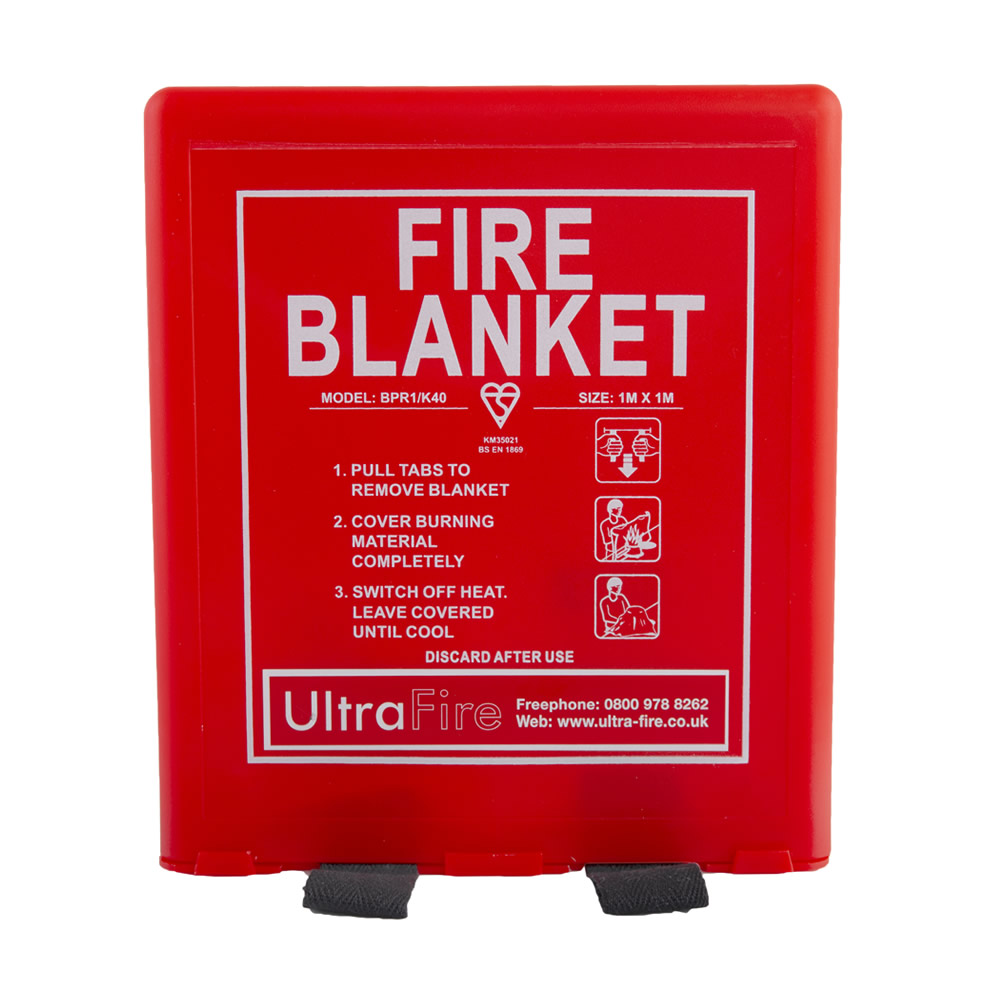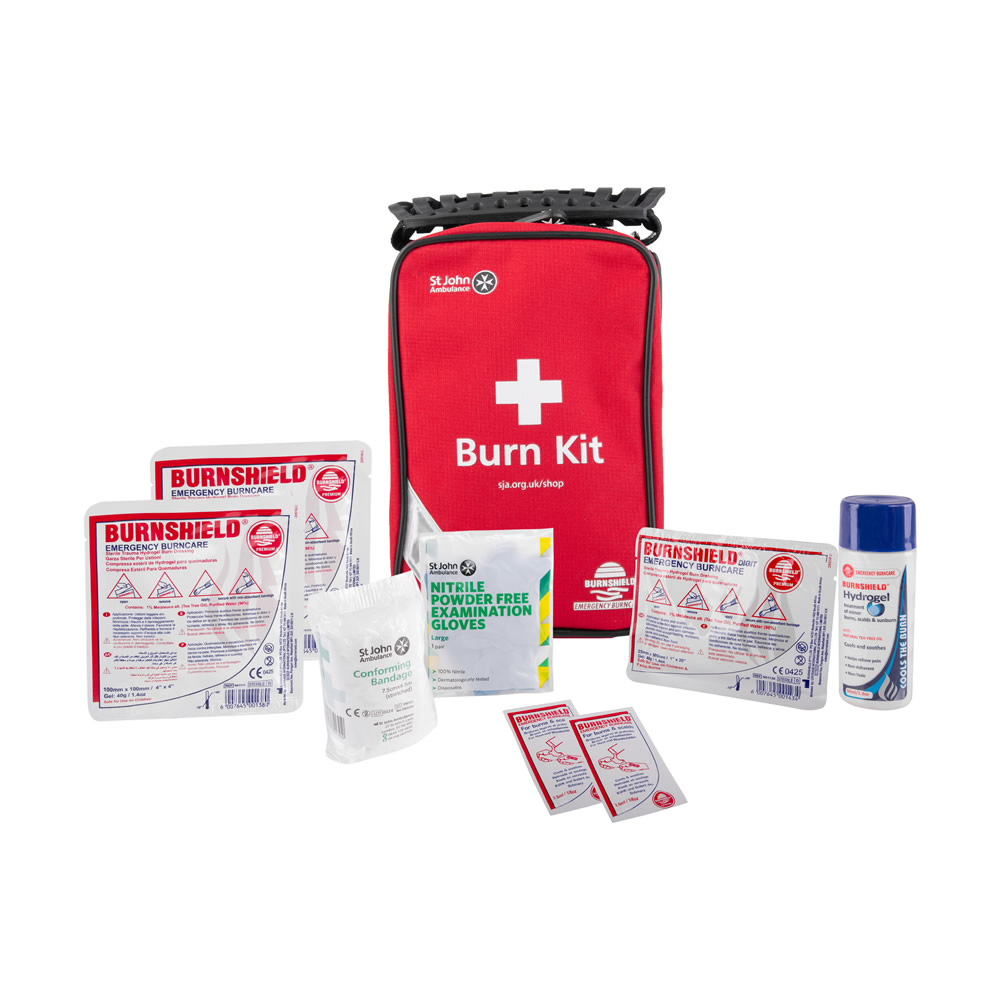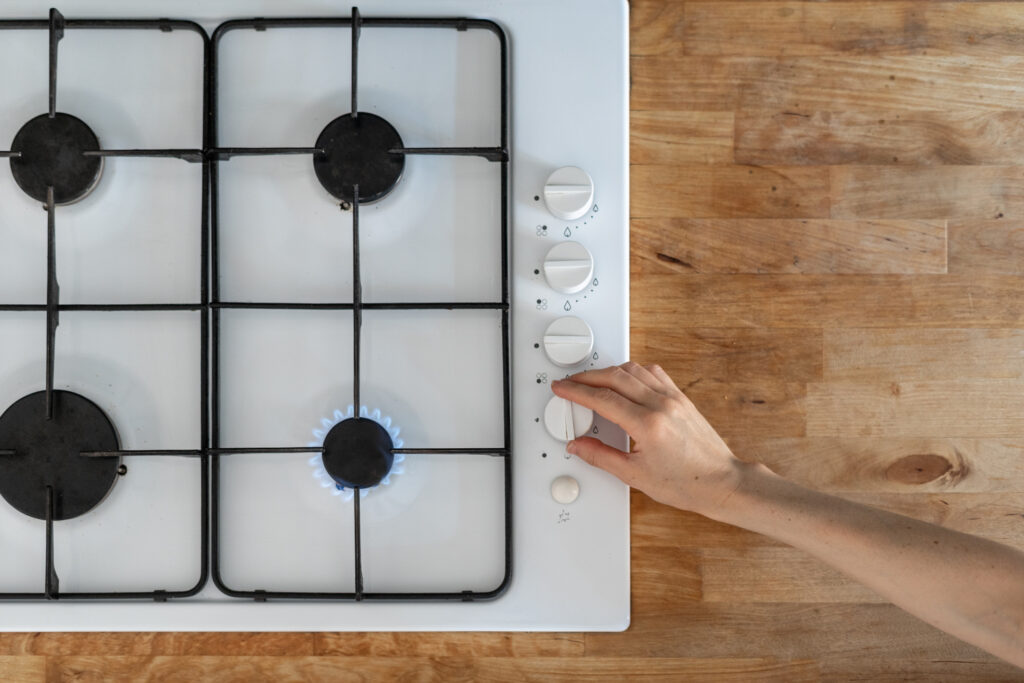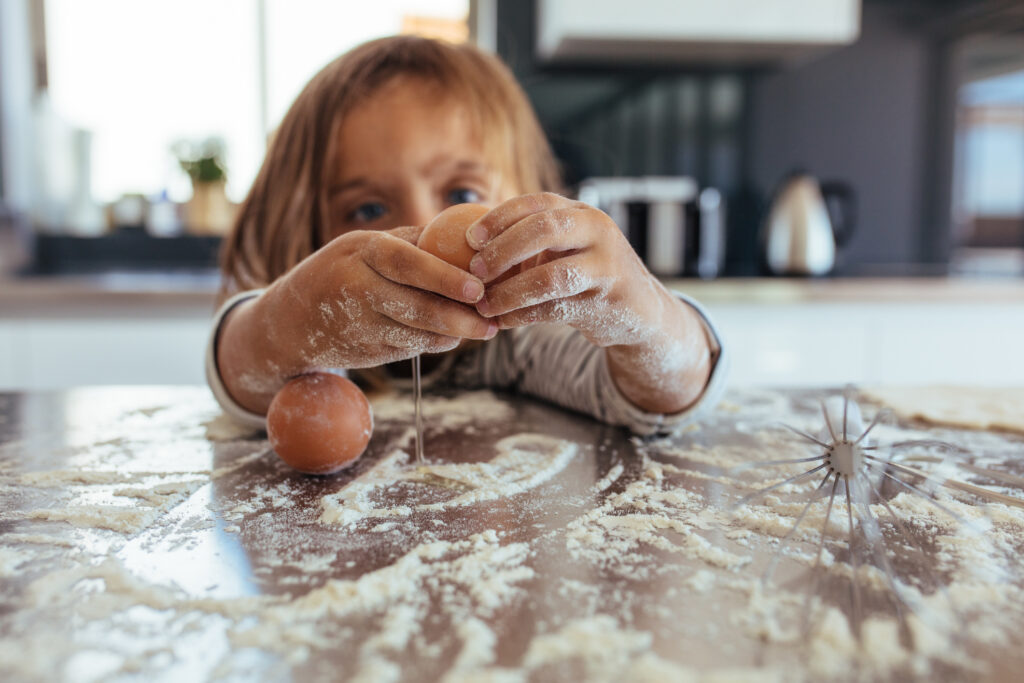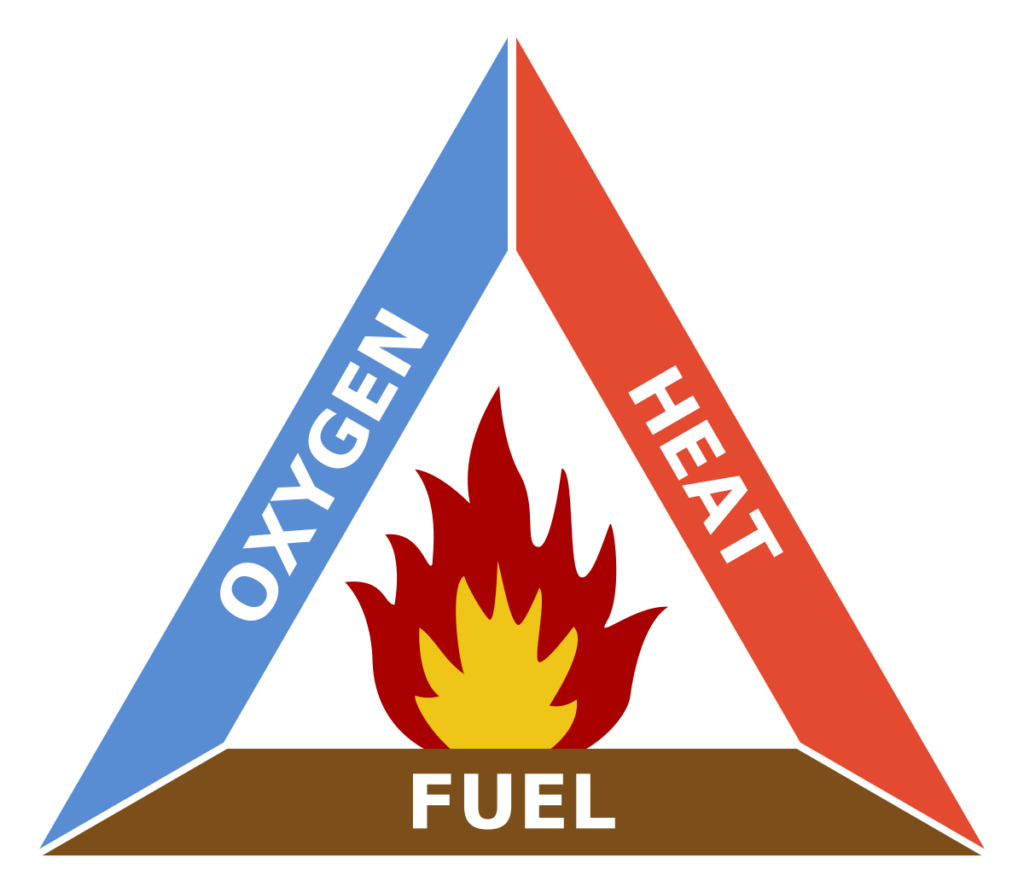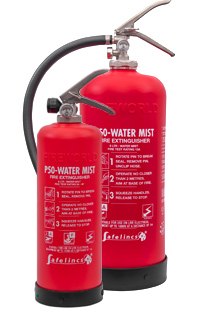Friday 1st March 2024
According to the National Fire Protection Association (NFPA), cooking equipment is the leading cause of house fires, with unattended cooking being the primary culprit. Cooking oil fires, in particular, pose a unique challenge due to the intensity and rapid spread of the flames.
Cooking oil fires are difficult to extinguish if you don’t have the right equipment at hand. The powerful jet of some fire extinguishers could spread the oil fire. Using water to extinguisher oil fires can cause the fire to erupt violently. Therefore, it is important to have the correct equipment to tackle kitchen fires
Tackling Cooking Oil Fires at Home
How to put out a Cooking Oil Fire
Pan fires can be tackled with fire blankets and fire extinguishers. A water mist fire extinguisher is versatile, and therefore can tackle all types of kitchen fire including fires involving electrical equipment up to 1000 volts. A fire blanket is a good option for most domestic kitchens, as generally smaller amounts of oil are used. A fire blanket is placed over the pan fire to smother it and starve the fire from oxygen.
For larger deep fat fryers in your home, we would recommend a wet chemical fire extinguisher which holds a 25F rating. The wet chemical extinguisher is made specifically for tackling larger quantities of oil on fire.
Where to put a Kitchen Fire Extinguisher
In the case of cooking oil fires, having a fire extinguisher within easy reach can be a lifesaver. Mount the extinguisher in a visible and easily accessible location, away from the stove but still within close proximity to the cooking area. We recommend placing your fire extinguisher near the kitchen exit, ensuring a quick and unobstructed path to safety. Avoid placing it too close to potential fire hazards, such as curtains or wooden cabinets.
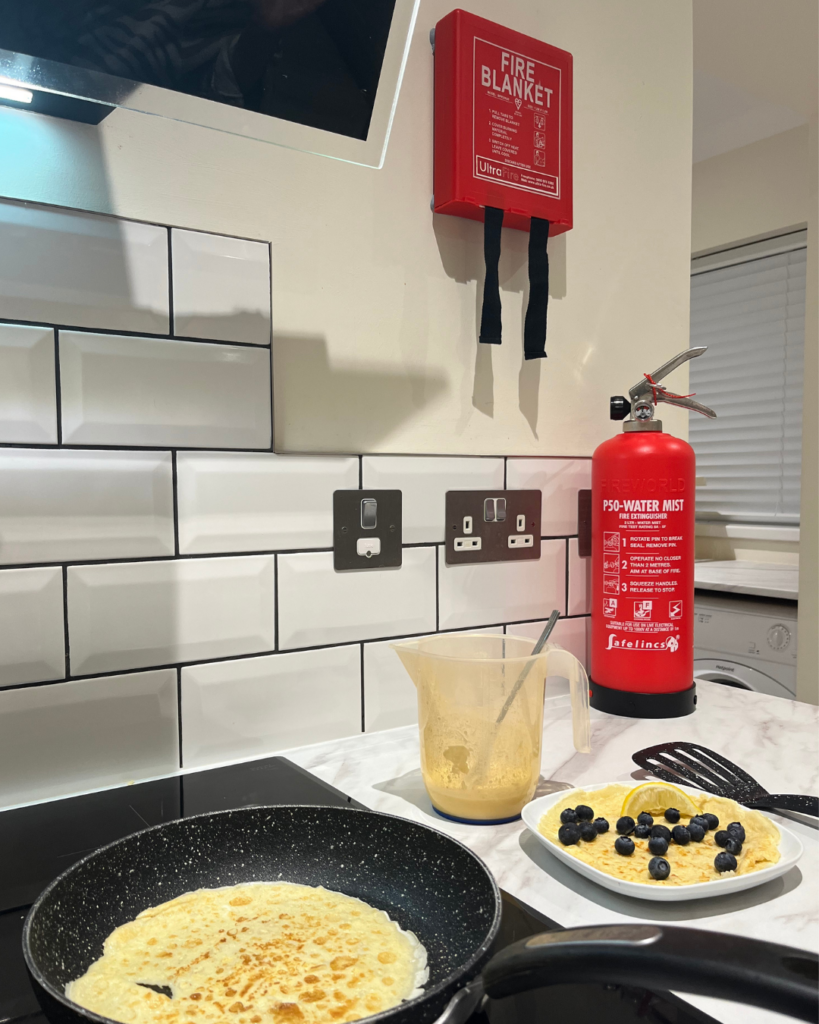
Tackling Cooking Oil Fires at Work
If you work in a commercial kitchen with deep fat fryers, a wet chemical kitchen fire extinguisher is usually recommended. Wet chemical fire extinguishers are specifically designed to put out cooking oil fires and therefore should be kept in kitchens for commercial use. The wet chemical fire extinguisher forms a foam blanket on top of the oil which stops the supply of oxygen, therefore extinguishing the fire. Fire blankets are also a useful addition in a commercial kitchen as they can be used on pan fires, cooking oil fires, waste basket fires and also clothing fires.
What to do in a Kitchen Fire
- Stay calm
- Turn off the heat source (if possible)
- If the fire is not too big, use your fire extinguisher or fire blanket to try and extinguish the fire
- Call emergency services
- Move anything else that could catch fire away from the burning oil if you can
- Make sure children and pets do not come near the fire
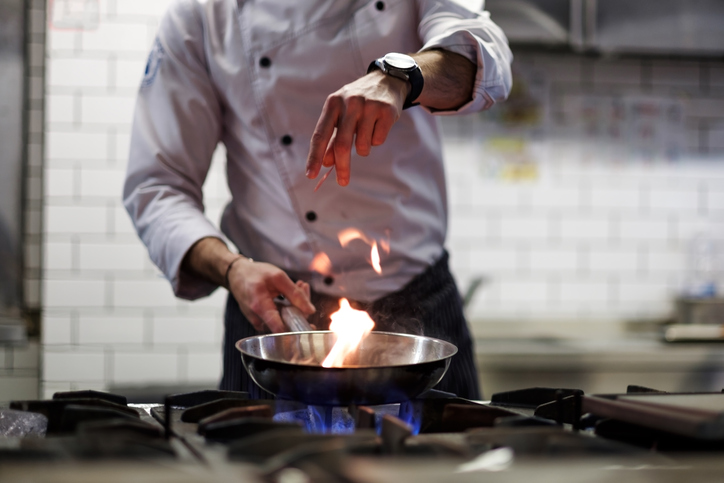
How can Cooking Oil Fires be Prevented?
To avoid cooking oil fires, never leave cooking unattended and pay attention to cooking pans and deep fat fryers at all times, especially when cooking with oil. Keep the area clean from grease buildup, as accumulated grease can be a potential fuel source for fires. In the event of a small grease fire, never use water to extinguish it. Instead, cover the pan with a fire blanket or use a fire extinguisher for kitchen fires. By adopting these preventive measures, you can significantly reduce the likelihood of cooking oil fires and enhance the overall safety of your kitchen.
For further advice on fire prevention in your home, complete the Home Fire Safety Check. Get personalised tips and a fire safety action plan to help you and your family to stay safe.


